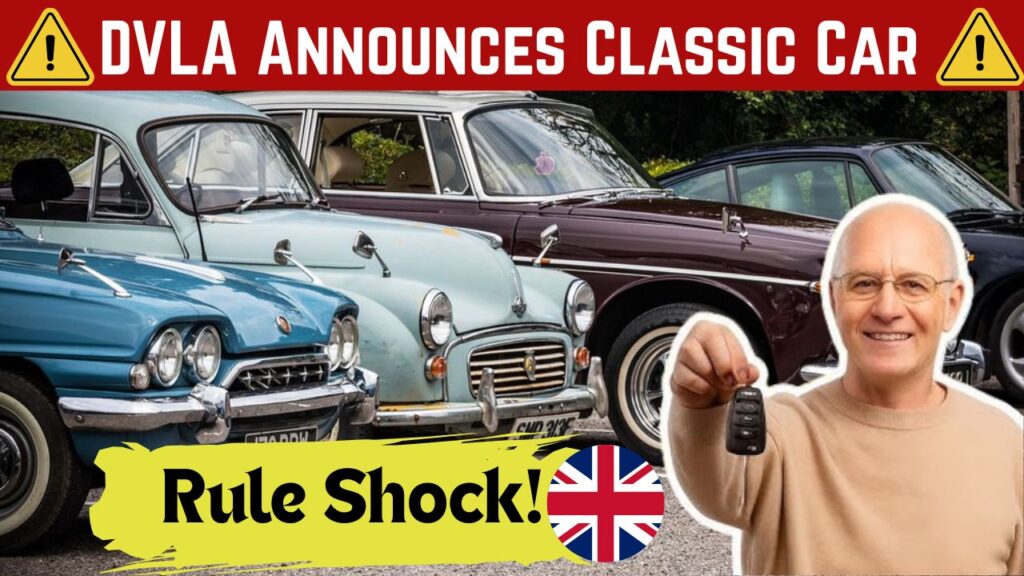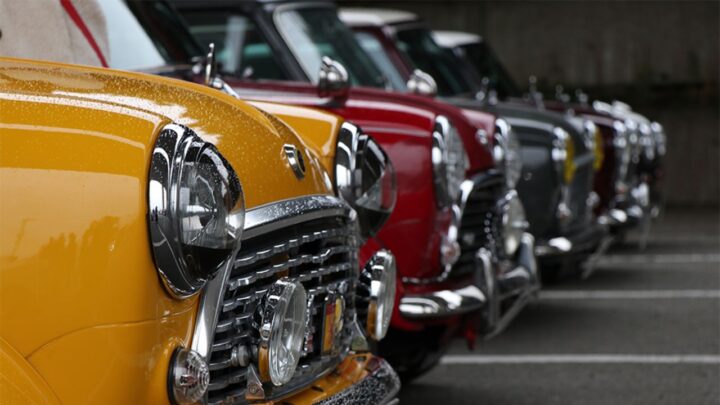The UK’s Driver and Vehicle Licensing Agency (DVLA) has announced new rule changes for classic car owners that could significantly affect how vehicles are taxed, maintained, and driven on public roads. These updates, coming into effect in 2025, aim to modernize road safety standards while preserving Britain’s motoring heritage. Classic car enthusiasts are being urged to understand these changes thoroughly, as non-compliance could lead to penalties or disqualification from historic vehicle tax exemptions. Here’s a detailed guide on everything UK drivers must know about the new DVLA classic car regulations.

DVLA Classic Car Age and Tax Exemption Changes 2025
Under the new DVLA guidelines, the eligibility age for a car to be considered “classic” for tax and MOT exemption will shift. Until now, cars older than 40 years automatically qualified for historic vehicle status, granting free road tax and MOT exemption. However, from 2025, stricter checks will apply to ensure vehicles remain roadworthy. The DVLA will also reassess cars that have undergone significant modifications, which may disqualify them from historic status. This move is designed to promote both road safety and authenticity in vehicle preservation.
Impact on MOT and Safety Standards for Classic Vehicles
The new rules tighten MOT exemptions, meaning that even some historic vehicles may need periodic inspections. The DVLA, in coordination with the Department for Transport, emphasizes that older vehicles must maintain core safety features like functional lights, brakes, and emissions controls. While classic cars retain partial exemption, any vehicle showing structural modifications or engine swaps may lose its MOT-free status. This ensures that all vehicles on UK roads, regardless of age, meet minimum safety and environmental requirements.
Registration and Documentation Updates by DVLA
Another major change involves documentation and ownership verification. The DVLA will introduce a revised V5C logbook format for classic cars, ensuring detailed tracking of restoration or modification work. Owners must declare any alterations to maintain eligibility for historic status. Failure to do so can result in fines or vehicle reclassification. This rule enhances the transparency of vehicle history, helping collectors and new buyers confirm the authenticity of vintage models before purchase.

Summary of Key DVLA Classic Car Rules 2025
From tax exemptions to MOT requirements and logbook reforms, these changes are part of a broader government effort to balance nostalgia with modern safety. The DVLA aims to protect Britain’s automotive legacy while ensuring that all cars—no matter how old—are safe for today’s roads. Drivers of classic models should check their V5C records, ensure their cars meet essential standards, and stay updated on registration timelines to avoid unexpected penalties.
| Category | Previous Rule | New DVLA Rule (2025) |
|---|---|---|
| Historic Vehicle Age | 40 years old | Minimum 40 years + safety check |
| MOT Exemption | Full exemption for 40+ years | Conditional exemption; safety test may apply |
| Vehicle Modifications | Minor modifications allowed | Major modifications void historic status |
| Tax Status | Zero road tax for historic vehicles | Continues, but verification required |
| V5C Logbook Requirements | Basic registration details | Detailed restoration and modification records |
FAQs About DVLA Classic Car Rule Changes
Q1: When do the DVLA classic car rule changes take effect?
Ans: The new rules are expected to be enforced from early 2025.
Q2: Will all cars older than 40 years remain tax-free?
Ans: Yes, but owners must maintain valid registration and roadworthiness.
Q3: Do modified cars still qualify as “classic”?
Ans: No, heavily modified cars may lose their classic or historic status.
Q4: How can drivers verify their car’s eligibility?
Ans: Check the updated DVLA database or contact local vehicle registration offices.





